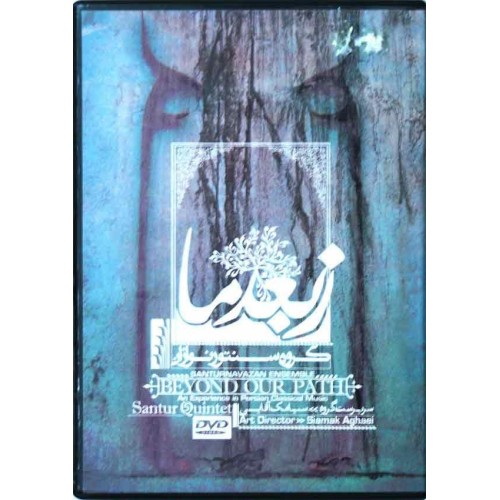- On sale!
- Out-of-Stock





Iran BEYOND OUR PATH Santur ( Hammered Dulcimer ) Music Concert DVD
Santur Players:
The santur (also santūr, santour, santoor ) (Persian: سنتور) is a Persian hammered dulcimer It is a trapezoid-shaped box often made of walnut or different exotic woods. The Persian classical santur has 72 strings. The name santur was first referenced in ancient Persian poetry. To date there has never been verifiable evidence what this name actually means, it is just a name and the only meaning it has in the Persian language is this instrument. The oval-shaped Mezrabs (mallets) are feather-weight and are held between the thumb, index and middle fingers. A typical Persian santur has two sets of bridges, providing a range of approximately three octaves. The right-hand strings are made of brass or copper, while the left-hand strings are made of steel. Two rows of 9 articles called "kharak" (total of 18 kharaks) divide the santur into three positions. Over each bridge crosses four strings spanning horizontally across the right and left side of the instrument. There are three sections of nine pitches: each for the bass, middle and higher octave called Poshte Kharak (behind the left bridges) comprising 27 notes all together. The top "F" note is repeated 2 times, creating a total of 25 separate tones in the Santur. The Persian santur is primarily tuned to a variety of different diatonic scales utilizing 1/4 tones (semi-tones) which are designated into 12 Dastgah's (modes) of Persian classical music. These 12 Dastgah's are the repertory of Persian classical music known as the Radif.